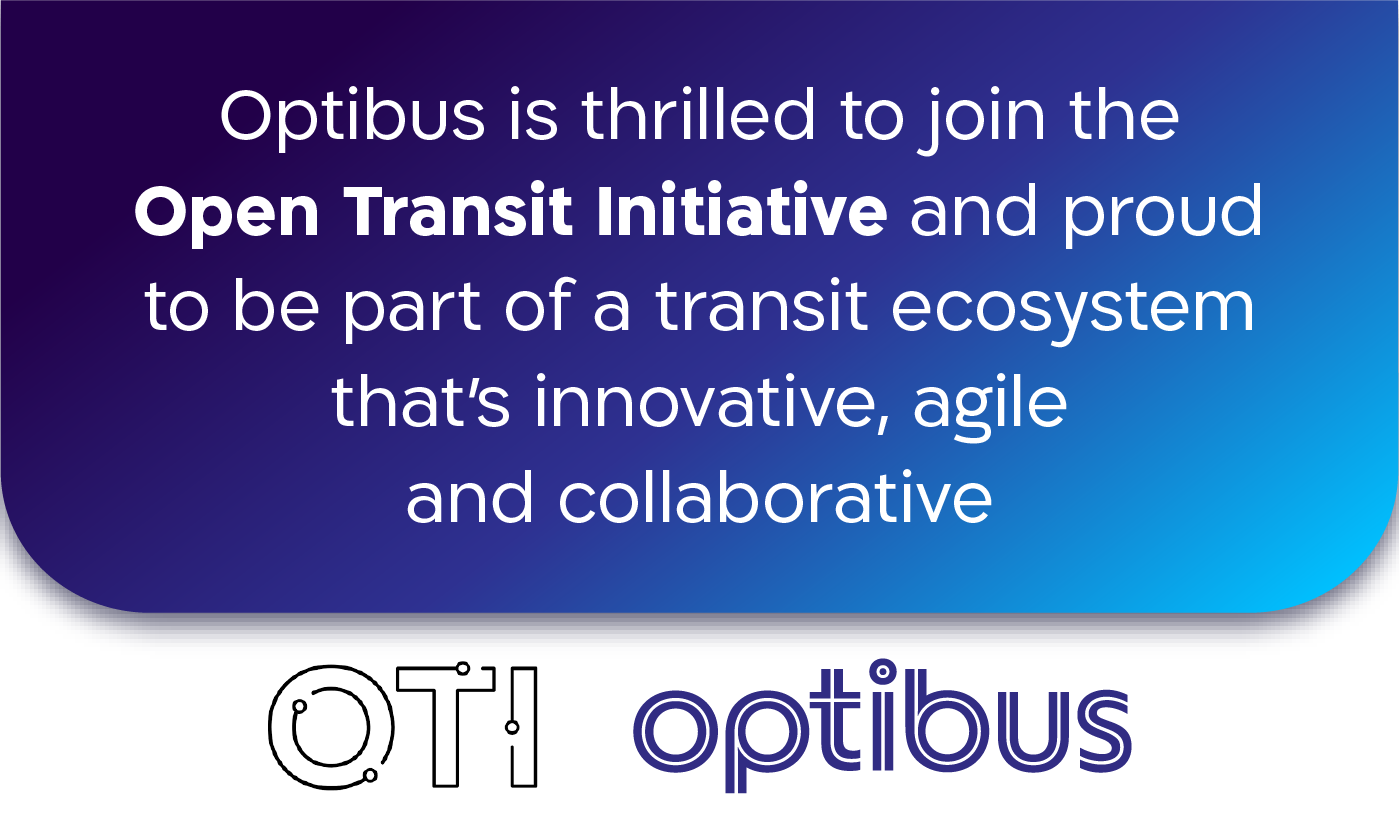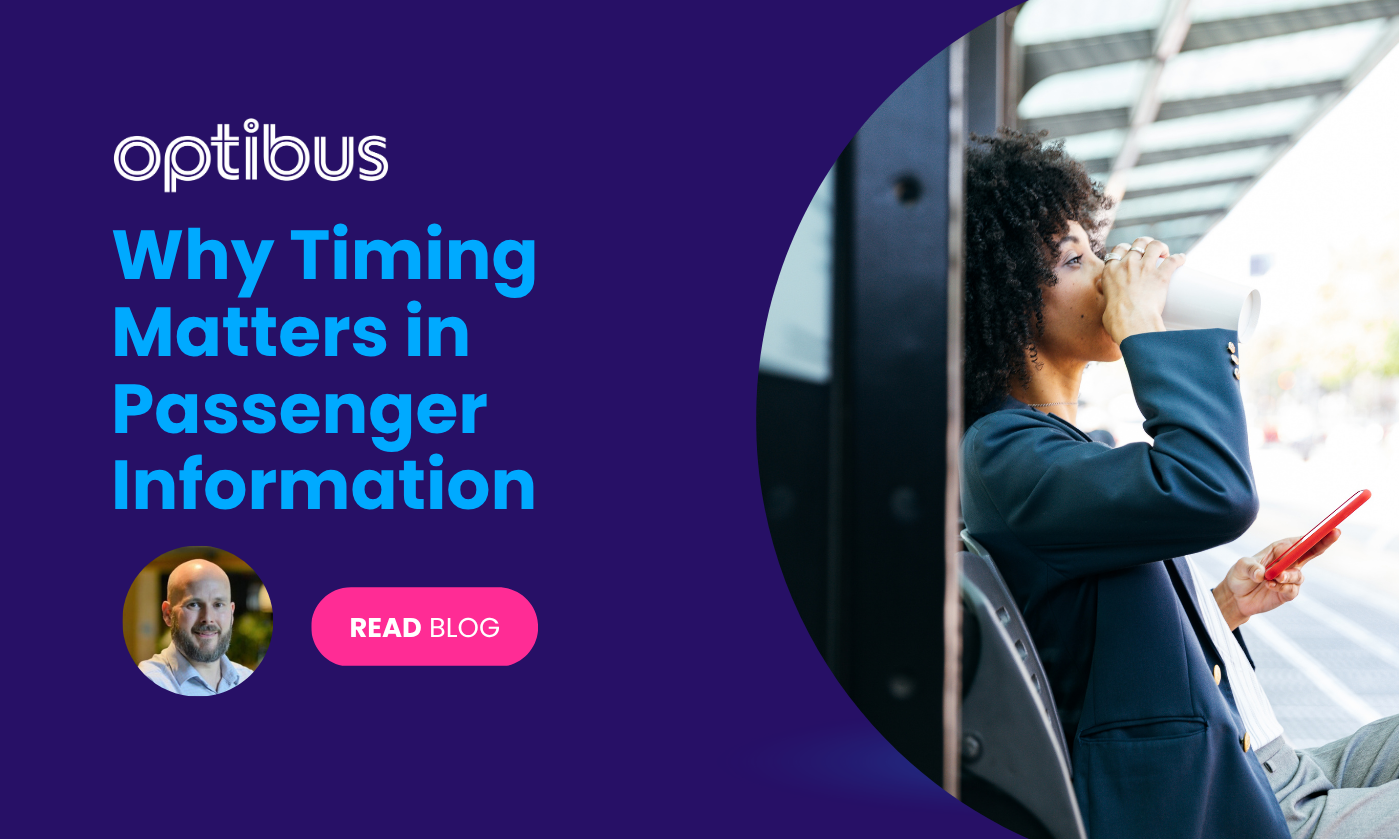We’ve all heard it before: every second counts. In public transportation, that couldn’t be more true. What if adjusting a few trip start times, even by a few minutes, could unlock major operational gains?
Most agencies and operators reach a point where they’ve done everything they can to optimize their schedules. Vehicles are tightly assigned. Routes are locked in. It feels like there’s nowhere left to go.
But with the right tool, even small adjustments can achieve major improvements.
At our webinar on reducing costs and improving efficiency, the Optibus team introduced a new capability that works alongside the Optibus Performance Suite: Timetable Optimization in Scheduling.
Its premise is simple: adjust trip start times by just a few minutes across the network to realize huge benefits. One minute here. Five minutes there. That’s it.
Make sure to watch the recording, because you’ll want to see what happens when those “micro-adjustments” are applied across the entire network.

Efficiency Without Compromise
Timetable Optimization in Scheduling doesn’t remove service. It doesn’t cut trips. It doesn’t break your schedule rules or disrupt passenger expectations. Instead, it works within your constraints (i.e. respecting headways, frequencies, interlining rules, and layovers) to make your schedule more efficient.
Here’s how it works, using one example shared during the webinar: a schedule originally built with spreadsheets required 31 vehicles, ran 454 km of deadhead distance per day, and incurred operational costs of $31,000 per day.
After running that schedule through Optibus’ classic vehicle optimization, that number dropped to 30 vehicles and 333 km/day of deadhead distance, a reduction of more than 100 km/day of deadhead distance, and $1,000 in daily savings.
Then came the real breakthrough: using Timetable Optimization in Scheduling. This enabled timetable adjustments not just for individual routes or route groups, but across entire depots, sites, and networks. It also unlocks efficiencies that were previously impossible.
By shifting trip start times across an entire depot or network, not just a single route, agencies can make faster adjustments, improve efficiency, and increase alignment with scheduling goals, without compromising reliability or passenger expectations.
With just a few minutes of flexibility per trip (up to 5 minutes earlier or later), Timetable Optimization in Scheduling reduced the vehicle requirement by three blocks — a full 10% of the fleet. Deadhead dropped to 314 km/day, and daily costs fell to $29,600. Over a typical month, that adds up to $31,000 in savings — by changing nothing but the timing.
.png?width=1600&height=1136&name=Timetable%20Optimization%20Strategic%20Planning%20(1).png)
A Tool Built for Reality
Timetable Optimization in Scheduling was designed with planners and schedulers in mind. This isn’t about hypothetical efficiency, it’s about making more efficient schedules right now, without impacting your greater schedule and way of operating.
Whether you’re an operator looking to reduce PVR to stay competitive in tenders, or a public authority (agency) seeking to deliver efficient service without compromising passenger experience, Timetable Optimization in Scheduling is made for you.
And yes, it considers the details that matter:
- Maintaining headways and frequencies
- Respecting connection rules and layover buffers
- Accounting for timeband-based running times
- Letting users lock specific trips that must stay fixed
If a vehicle must pass a relief point or maintain buffer time due to uncertainty, those requirements can be included too. It's all configurable, and it's all respected by the optimization engine.
Not Just for Buses
The tool’s flexibility extends beyond traditional bus scheduling. The Optibus team highlighted how agencies are already applying these techniques in mixed-mode networks, combining rail and bus timetables while ensuring smooth transfers. With constraints that preserve passenger experience, the solution becomes powerful across modes and cities.
Watch the full recording to see Timetable Optimization in Scheduling in action.







%20(1)%20(1)-1.png)